 There are altogether too many various artist compilations currently outin the market that presume to document a particular musical scene or,worse, claim to serve as a kind of audio history lesson. All of thesereleases seem to be suggesting that they are the "final word" on aparticular genre or scene. Most fall far short of this goal. Recently,Rough Trade released a "post punk" primer, which included a few greatrarities from the original era like Liquid Liquid and World DominationEnterprises, together with a bunch of head-scratchingly inappropriateinclusions from newer artists. Very little thought seems to be given totrack sequencing in most cases, making for an uneven listen that ismore annoying that it is educational. Many of these compilations alsorecycle the same tracks that have appeared on numerous other releases.I can count on one hand the number of compilations that I have found tobe valuable, and among them is Soul Jazz's In The Beginning, There Was Rhythmfrom 2001. True, some of the tracks included were widely available onCD already, but the selection and sequencing of tracks was trulyinspired. So, I had high hopes for the newest Soul Jazz "music history"comp, New York Noise: Dance Music From the New York Underground1978-1982. The compilers have attempted to marry the disparate genresof post-punk dance, underground disco, no-wave and hip-hop under onebig NYC banner. With a few exceptions, they succeed. Liquid Liquid's"Optimo" is a great starting point, combining African rhythms and punkurgency into a tense, funky groove. Filling out the "mutant disco"quotient are rare selections from Konk, The Dance and The Bloods. BillLaswell's Material are included, with a dialogue-sampling disco-housemeltdown that sounds way ahead of its time. NYC underground avant-discoprodigy Arthur Russell is here under his Dinosaur L guise, with thetypically brilliant "Clean on Your Bean #1". It's nice to hear thiscrisply remastered song without having to shell out $700 for theoriginal 12" on Sleeping Bag. ESG and The Bush Tetras represent for theladies with a couple estrogen-fueled funk tracks. Defunkt's "Defunkt"seems a little out of place; it's nice, but a rather typical late-70'sdisco-funk number. Rahmelzee vs. K. Rob's long-winded "Beat Bop" standsalong with Grandmaster Flash's "White Lines" as a masterpiece of thefirst era of NYC hip-hop. I'm not sure what the compilers were thinkingby the inclusion of DNA, MARS and The Contortions. Sure, these bandswere included on the epochal 1978 No New York LP which defined theno-wave aesthetic, but does this qualify as dance music? Only anepileptic on ecstasy would try to dance to these noisy, herky-jerkyrhythms. Ditto Glenn Branca's eight-minute, multiple-guitar fantasia"Lesson No.1." These tracks are all quite good, but they stick out likea sore thumb on a so-called "dance music" compilation. These are minorquibbles, however, as the music is brilliant, and MARS' "HelenFordsdale" has always been my favorite track from the No New Yorkcompilation. Words are insufficient to describe the drama and intensityof this two-and-a-half minute explosion of rock n' roll chaos. All inall, New York Noise is a valuable compilation for those of us who don'tmind pedantic compilers giving us a lesson in musical history.
There are altogether too many various artist compilations currently outin the market that presume to document a particular musical scene or,worse, claim to serve as a kind of audio history lesson. All of thesereleases seem to be suggesting that they are the "final word" on aparticular genre or scene. Most fall far short of this goal. Recently,Rough Trade released a "post punk" primer, which included a few greatrarities from the original era like Liquid Liquid and World DominationEnterprises, together with a bunch of head-scratchingly inappropriateinclusions from newer artists. Very little thought seems to be given totrack sequencing in most cases, making for an uneven listen that ismore annoying that it is educational. Many of these compilations alsorecycle the same tracks that have appeared on numerous other releases.I can count on one hand the number of compilations that I have found tobe valuable, and among them is Soul Jazz's In The Beginning, There Was Rhythmfrom 2001. True, some of the tracks included were widely available onCD already, but the selection and sequencing of tracks was trulyinspired. So, I had high hopes for the newest Soul Jazz "music history"comp, New York Noise: Dance Music From the New York Underground1978-1982. The compilers have attempted to marry the disparate genresof post-punk dance, underground disco, no-wave and hip-hop under onebig NYC banner. With a few exceptions, they succeed. Liquid Liquid's"Optimo" is a great starting point, combining African rhythms and punkurgency into a tense, funky groove. Filling out the "mutant disco"quotient are rare selections from Konk, The Dance and The Bloods. BillLaswell's Material are included, with a dialogue-sampling disco-housemeltdown that sounds way ahead of its time. NYC underground avant-discoprodigy Arthur Russell is here under his Dinosaur L guise, with thetypically brilliant "Clean on Your Bean #1". It's nice to hear thiscrisply remastered song without having to shell out $700 for theoriginal 12" on Sleeping Bag. ESG and The Bush Tetras represent for theladies with a couple estrogen-fueled funk tracks. Defunkt's "Defunkt"seems a little out of place; it's nice, but a rather typical late-70'sdisco-funk number. Rahmelzee vs. K. Rob's long-winded "Beat Bop" standsalong with Grandmaster Flash's "White Lines" as a masterpiece of thefirst era of NYC hip-hop. I'm not sure what the compilers were thinkingby the inclusion of DNA, MARS and The Contortions. Sure, these bandswere included on the epochal 1978 No New York LP which defined theno-wave aesthetic, but does this qualify as dance music? Only anepileptic on ecstasy would try to dance to these noisy, herky-jerkyrhythms. Ditto Glenn Branca's eight-minute, multiple-guitar fantasia"Lesson No.1." These tracks are all quite good, but they stick out likea sore thumb on a so-called "dance music" compilation. These are minorquibbles, however, as the music is brilliant, and MARS' "HelenFordsdale" has always been my favorite track from the No New Yorkcompilation. Words are insufficient to describe the drama and intensityof this two-and-a-half minute explosion of rock n' roll chaos. All inall, New York Noise is a valuable compilation for those of us who don'tmind pedantic compilers giving us a lesson in musical history.- Liquid Liquid - Optimo
- Dinosaur L - Clean on Your Bean #1
- MARS - Helen Fordsdale



 It's difficult to believe that The Clientele have only gotten around to releasing a full length album now, six years after they appeared on the Fierce Panda 7" compilation, Cry Me a Liver. Although the London-based trio have released a steady stream of 7" singles, EPs, and even a critically acclaimed singles compilation in 2000, The Violet Hour finds the band exploring a larger framework and expanding their sound. Overall, the production sounds more focused than their previous efforts, though it does retain much of the charming muddiness of some of their earliest releases such as "All the Dust and Glass."
It's difficult to believe that The Clientele have only gotten around to releasing a full length album now, six years after they appeared on the Fierce Panda 7" compilation, Cry Me a Liver. Although the London-based trio have released a steady stream of 7" singles, EPs, and even a critically acclaimed singles compilation in 2000, The Violet Hour finds the band exploring a larger framework and expanding their sound. Overall, the production sounds more focused than their previous efforts, though it does retain much of the charming muddiness of some of their earliest releases such as "All the Dust and Glass." There is a long dark and wet tunnel ahead of me and at its end is apartially opened door with a faint blue glow pulsing from within:something horrible is happening inside and it scares me. I walk forwardcautiously and peer inside and then each of my senses is assaulted tothe point of death. I am left with only my hearing and tactile sensesto manouevre a large and very dangerous habitat. The dry wheezes ofbroken machinery, the incoherent babble of hyper morons, and the soundof a thousand tiny legs echo and rebound all about me. Distant moansdart down long corridors and bring messages of pain and incomingmisanthropy. There is some shelter, some spaces to breathe in withoutfear of being heard by whatever it is that's out there. Pacifying bellsflow somewhere in the distance and the gentle hum of computers becomesa lullaby for my weary head. Hell is still out there somewhere, though.Before long screams demolish the walls and send chills down my spine.No matter where I run these sounds follow me. My hands press againstthe cold and metallic walls hoping to find some familiar nook or somesemblance of home. There's nothing here that I recognize. This is anutterly alien world. Eventually I fall asleep and those same soundshaunt my dreams only they are perverted. Everything has slowed downwith only momentary stabs of pain. The sound of water dripping to thefloor wakes me and I bathe in it happily: here finally is some relief.I lay back and drift in the clear blue water staring at the sun andwonder to myself: did I ever wake up from that dream? Was I ever evenawake at all?
There is a long dark and wet tunnel ahead of me and at its end is apartially opened door with a faint blue glow pulsing from within:something horrible is happening inside and it scares me. I walk forwardcautiously and peer inside and then each of my senses is assaulted tothe point of death. I am left with only my hearing and tactile sensesto manouevre a large and very dangerous habitat. The dry wheezes ofbroken machinery, the incoherent babble of hyper morons, and the soundof a thousand tiny legs echo and rebound all about me. Distant moansdart down long corridors and bring messages of pain and incomingmisanthropy. There is some shelter, some spaces to breathe in withoutfear of being heard by whatever it is that's out there. Pacifying bellsflow somewhere in the distance and the gentle hum of computers becomesa lullaby for my weary head. Hell is still out there somewhere, though.Before long screams demolish the walls and send chills down my spine.No matter where I run these sounds follow me. My hands press againstthe cold and metallic walls hoping to find some familiar nook or somesemblance of home. There's nothing here that I recognize. This is anutterly alien world. Eventually I fall asleep and those same soundshaunt my dreams only they are perverted. Everything has slowed downwith only momentary stabs of pain. The sound of water dripping to thefloor wakes me and I bathe in it happily: here finally is some relief.I lay back and drift in the clear blue water staring at the sun andwonder to myself: did I ever wake up from that dream? Was I ever evenawake at all? 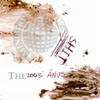 As featured on NPR, Australian Luke Collision, a.k.a. Dsico is comingforth as being one of the stars of the mash-up. His label, Spasticatedhas issued this: a parody wrapped in irony and threatened by a lawsuit.Released in a limited quantity of 500, all the contributors to Ministry of Shit are probably well aware that mash-ups are becoming a trendy thing to do, however, cleverly masked as a dreadful Ministry of Sound compilation, it's easy to forgive them for making a mockery of a larger, even more obnoxious trend. For those fans of The Best Bootlegs in The World,this is a brand new compilation to go on the shelf. Contained hereinare plenty of all-new illegal remixes of Eminem, Madonna, JustinTimberlake and other pop icons. Some are clever and frighteningmutations (yes, it's possible to make Avril Lavigne's voice evenworse!) while many others like Dsico's "I R*cked Britney," are modernremixes. (I wish I knew where Toecutter's "Shit on Me" actually camefrom - it's got far more sex than the entire Nymphomatriarch releaseand if it weren't for the FCC, I'd be playing this song on my radioshow all the time.) AC/3P's "Oi," on the other hand is just a downrightgratuitous, revolting cover with unbearable vocals. Luckily there'splenty of variety on the compilation to not make this sound like thesame track over and over again. The disc closes much like apull-my-finger fart joke that actually is funny every time (I keepthinking of a South Park episode from this year), and with the piggyreference, "Ice Ice Bacon" can only be Stockport's finest V/Vm crew(come on, the artist name is Trotters). My hope is that this compactually finds its way into peoples hands by grotesque mistake (sorecord store clerks, look for it and strategically shove it in thewrong place). With any luck, something like this can potentially openthe eyes of consumers looking to get a moronic dance fix; findsomething this amusing, stupid, and clever; and leave the regular shitbehind. As a bonus, a crafty remixed video of Dsico's "I R*cked Britney(Moonwalk Style)" (combining the white guy who thinks he's black withthe black guy who thinks he's white) is included in the data portion ofthe CD.
As featured on NPR, Australian Luke Collision, a.k.a. Dsico is comingforth as being one of the stars of the mash-up. His label, Spasticatedhas issued this: a parody wrapped in irony and threatened by a lawsuit.Released in a limited quantity of 500, all the contributors to Ministry of Shit are probably well aware that mash-ups are becoming a trendy thing to do, however, cleverly masked as a dreadful Ministry of Sound compilation, it's easy to forgive them for making a mockery of a larger, even more obnoxious trend. For those fans of The Best Bootlegs in The World,this is a brand new compilation to go on the shelf. Contained hereinare plenty of all-new illegal remixes of Eminem, Madonna, JustinTimberlake and other pop icons. Some are clever and frighteningmutations (yes, it's possible to make Avril Lavigne's voice evenworse!) while many others like Dsico's "I R*cked Britney," are modernremixes. (I wish I knew where Toecutter's "Shit on Me" actually camefrom - it's got far more sex than the entire Nymphomatriarch releaseand if it weren't for the FCC, I'd be playing this song on my radioshow all the time.) AC/3P's "Oi," on the other hand is just a downrightgratuitous, revolting cover with unbearable vocals. Luckily there'splenty of variety on the compilation to not make this sound like thesame track over and over again. The disc closes much like apull-my-finger fart joke that actually is funny every time (I keepthinking of a South Park episode from this year), and with the piggyreference, "Ice Ice Bacon" can only be Stockport's finest V/Vm crew(come on, the artist name is Trotters). My hope is that this compactually finds its way into peoples hands by grotesque mistake (sorecord store clerks, look for it and strategically shove it in thewrong place). With any luck, something like this can potentially openthe eyes of consumers looking to get a moronic dance fix; findsomething this amusing, stupid, and clever; and leave the regular shitbehind. As a bonus, a crafty remixed video of Dsico's "I R*cked Britney(Moonwalk Style)" (combining the white guy who thinks he's black withthe black guy who thinks he's white) is included in the data portion ofthe CD. Lullabies and fairy tales can possess certain qualities that belietheir gentle names, and might well inspire sleepless nights as opposedto sweet dreams. The former speak of helpless, cradle-bound babiesfalling to their certain doom, and anyone who has glanced through theoriginal stories of the brothers Grimm knows that their name was arather apt description of their stories' conclusions. It's amazing howa soothing voice or an impeccable melody can assuage the rather irksomefeel of the gothic subject matter. On 'Seven Years of Seven Limbs,'Fern Knight (comprised of ex-Difference Engine members Margie Wienk andMike Corcoran) has given us a collection of their own folktales thatplay with darker shades of storytelling imbued with a fairy tale likesense of wonder. From the outset of "She Who Was So Precious to You,"we find a sparse arrangement of acoustic guitar and strings that arelit up by Wienk's gorgeous vocals, like a shaft of sunlight peekingthrough a dark thicket of dead trees. The lyrics are foreboding andpresents us with the first of many moments of grotesque beauty, "If thefull moon won't illuminate us / if the wine glass won't even stay full/ if the wolf won't eliminate you / then I will." It is a series ofimages so vibrant, so enticingly conveyed that you're pulled in; andyet they are also full of malice. This malevolence is undercut somewhatby a desolate feeling, as in "Chelyabinsk," which gives off a sense ofgreat distance and overwhelming loss that has settled into fear andregret. In "Boxing Day", Wienk dons a red riding hood, declaring "Idon't think it's okay to be going downhill with you" to whoever orwhatever serves as the big bad wolf in her emotional dark forest. Thesong begins with the twang of a slide guitar, however over the courseof its seven minutes, it loses the plot and begins to drift off of itsstructure finally dissolving into a wispy collection of church bells,alarm calls, and telephone ringers before segueing into the rain andstreet noise intro of "Mover Ghost." In the waning minutes of the disc,the metaphor and imagery of the wolves, the dark forests and watchfulmoons begins to fade away in favor of more literal expressions of theconflicts they embodied. "Make your record of it / You're such an easytarget / mark those days off on your wall." The distance is nowmeasured in time, not symbolized by some far off Russian outpost.'Seven Years of Severed Limbs' closes with the stunningly beautiful"Dog Named Summer," loaded full with an impeccable melody and moresoaring vocals that shape the scene of that golden yellow summer sundipping below the rooftops, the heaviness of the heat and the method ofyour movements. Fern Knight draws a slow story, one that makes for anexcellent tale that explores those winding forest paths and the thingsthat lie hidden between the lines
Lullabies and fairy tales can possess certain qualities that belietheir gentle names, and might well inspire sleepless nights as opposedto sweet dreams. The former speak of helpless, cradle-bound babiesfalling to their certain doom, and anyone who has glanced through theoriginal stories of the brothers Grimm knows that their name was arather apt description of their stories' conclusions. It's amazing howa soothing voice or an impeccable melody can assuage the rather irksomefeel of the gothic subject matter. On 'Seven Years of Seven Limbs,'Fern Knight (comprised of ex-Difference Engine members Margie Wienk andMike Corcoran) has given us a collection of their own folktales thatplay with darker shades of storytelling imbued with a fairy tale likesense of wonder. From the outset of "She Who Was So Precious to You,"we find a sparse arrangement of acoustic guitar and strings that arelit up by Wienk's gorgeous vocals, like a shaft of sunlight peekingthrough a dark thicket of dead trees. The lyrics are foreboding andpresents us with the first of many moments of grotesque beauty, "If thefull moon won't illuminate us / if the wine glass won't even stay full/ if the wolf won't eliminate you / then I will." It is a series ofimages so vibrant, so enticingly conveyed that you're pulled in; andyet they are also full of malice. This malevolence is undercut somewhatby a desolate feeling, as in "Chelyabinsk," which gives off a sense ofgreat distance and overwhelming loss that has settled into fear andregret. In "Boxing Day", Wienk dons a red riding hood, declaring "Idon't think it's okay to be going downhill with you" to whoever orwhatever serves as the big bad wolf in her emotional dark forest. Thesong begins with the twang of a slide guitar, however over the courseof its seven minutes, it loses the plot and begins to drift off of itsstructure finally dissolving into a wispy collection of church bells,alarm calls, and telephone ringers before segueing into the rain andstreet noise intro of "Mover Ghost." In the waning minutes of the disc,the metaphor and imagery of the wolves, the dark forests and watchfulmoons begins to fade away in favor of more literal expressions of theconflicts they embodied. "Make your record of it / You're such an easytarget / mark those days off on your wall." The distance is nowmeasured in time, not symbolized by some far off Russian outpost.'Seven Years of Severed Limbs' closes with the stunningly beautiful"Dog Named Summer," loaded full with an impeccable melody and moresoaring vocals that shape the scene of that golden yellow summer sundipping below the rooftops, the heaviness of the heat and the method ofyour movements. Fern Knight draws a slow story, one that makes for anexcellent tale that explores those winding forest paths and the thingsthat lie hidden between the lines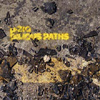 After several years of collaborative and one-off solo projects, Mike Paradinas finally returns to the moniker that he is most recognized for. Threatened to be his final µ-ziq album, Bilious Paths offers 53 thrilling minutes of eclectic electronics, including bits of hardcore, funk, hip-hop, 2-step, rave and, of course, drill n bass.
After several years of collaborative and one-off solo projects, Mike Paradinas finally returns to the moniker that he is most recognized for. Threatened to be his final µ-ziq album, Bilious Paths offers 53 thrilling minutes of eclectic electronics, including bits of hardcore, funk, hip-hop, 2-step, rave and, of course, drill n bass.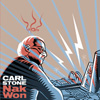 The three songs that compose this full-length present three distinctexperiences: the chaos of the electric world, the sublime glow of theheavenly spheres, and the mayhem of an ever-increasing globalconsciousness. It all begins with sine waves bolting through theatmosphere like a futuristic weapon bent on destroying the moon. Slowlythe tones begin to skip and play musical chairs changing both theirtones and their placement inside my brain. Once inside they wreak havocand expand the auditory receptors in preperation for the fuzzy hazethat nearly rises to the surface. The rhythmic tones bounce manicallyand are somewhat subdued by the calm underneath but eventually everysound returns to its origin and the sound of buzzing electricity is theonly thing left. "Kreutz" permeates every reigion of space with aseries of rolling melodic tones. Closing my eyes I can imagine thefirey birth of a solar system unfolding before my eyes as the variouselements cool and new-born planets revolve peacefully about the sun.This stands in stark contrast to both "Nak Won" and the closing "DarulKabap." Various ethnic instruments open this nearly half-hour longpiece and unfold into a flower of technological and ancestral influencealike. Everything begins gently and slowly with each sound having itsown room to breathe but then a populace of sounds begins to create acrowd and the original instruments become suffocated. Voices replacethe instruments but are struck down by manipulating their tone andlength. The "primitive" and "advanced" meet somewhere in the middle andthen a rhythm is created out of cutting back and forth between the twoin a schizophrenic fury and by introducing some percussive instrumentsinto the mix. Confusion, anxiety, and relief all exist within the pieceand when it's all over I am stunned by the beauty that is found in thisfusion of vocal, acoustic, and electronic influences. Nak Wonis an example of the original and unique things that can still be donewithin the realm of electronic composition and noise. Are the purveyorsof all things glitch out there paying any attention?
The three songs that compose this full-length present three distinctexperiences: the chaos of the electric world, the sublime glow of theheavenly spheres, and the mayhem of an ever-increasing globalconsciousness. It all begins with sine waves bolting through theatmosphere like a futuristic weapon bent on destroying the moon. Slowlythe tones begin to skip and play musical chairs changing both theirtones and their placement inside my brain. Once inside they wreak havocand expand the auditory receptors in preperation for the fuzzy hazethat nearly rises to the surface. The rhythmic tones bounce manicallyand are somewhat subdued by the calm underneath but eventually everysound returns to its origin and the sound of buzzing electricity is theonly thing left. "Kreutz" permeates every reigion of space with aseries of rolling melodic tones. Closing my eyes I can imagine thefirey birth of a solar system unfolding before my eyes as the variouselements cool and new-born planets revolve peacefully about the sun.This stands in stark contrast to both "Nak Won" and the closing "DarulKabap." Various ethnic instruments open this nearly half-hour longpiece and unfold into a flower of technological and ancestral influencealike. Everything begins gently and slowly with each sound having itsown room to breathe but then a populace of sounds begins to create acrowd and the original instruments become suffocated. Voices replacethe instruments but are struck down by manipulating their tone andlength. The "primitive" and "advanced" meet somewhere in the middle andthen a rhythm is created out of cutting back and forth between the twoin a schizophrenic fury and by introducing some percussive instrumentsinto the mix. Confusion, anxiety, and relief all exist within the pieceand when it's all over I am stunned by the beauty that is found in thisfusion of vocal, acoustic, and electronic influences. Nak Wonis an example of the original and unique things that can still be donewithin the realm of electronic composition and noise. Are the purveyorsof all things glitch out there paying any attention?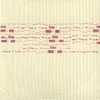 Released back in October 2002, this second release on the City CentreOffices label for the Berlin electronic duo of Bertram Denzel and ErikHuhn layers samples of acoustic instruments with electronic elements ofsynth patches, drum modules and other ambient sounds. The bulk of Time Is A Good Thing'snear sixty minutes are comprised of rhythmic compositional collagesthat convey a relaxed atmosphere without a lot of chord progressionsgoing on to crowd the space being created. The warm, lilting guitarmotifs on "Chicago" are subtly accented with keyboard and anchored byminimal bass to gradually draw in distant drones for a very invitingopening track. "Kinogat" inches along to rhythmic, sampled low-endstatic pops and a single note backbeat while rich synthesizer chordswash over to produce a somewhat melancholic track with an impliedsectional form. The distraction created by the out of place and drawnout "Shaffel" sounds in part to be a mismatch of glitchy rhythmicsamples that continue without any chance of resolving themselves whilelow end rumbles pop up like unwelcomed speed bumps. The tracks beyondthis melee more than make up for it. The whisper of rhythm nailed downby a steady kick drum on "Faller" is played off by sampled,heavy-handed acoustic guitar motifs that through repetition appear tobecome fuller and more intense. On first listen, it may appear thatDenzel + Huhn have grouped together a lot of nice choices for soundsand rhythms to compensate for a lacking sense of traditionalcomposition. However, it does become apparent in the given setting thatthe mixing of the sounds used and the sense of time and placement ofthem are more integral than a lot of melodies and chord progressions.
Released back in October 2002, this second release on the City CentreOffices label for the Berlin electronic duo of Bertram Denzel and ErikHuhn layers samples of acoustic instruments with electronic elements ofsynth patches, drum modules and other ambient sounds. The bulk of Time Is A Good Thing'snear sixty minutes are comprised of rhythmic compositional collagesthat convey a relaxed atmosphere without a lot of chord progressionsgoing on to crowd the space being created. The warm, lilting guitarmotifs on "Chicago" are subtly accented with keyboard and anchored byminimal bass to gradually draw in distant drones for a very invitingopening track. "Kinogat" inches along to rhythmic, sampled low-endstatic pops and a single note backbeat while rich synthesizer chordswash over to produce a somewhat melancholic track with an impliedsectional form. The distraction created by the out of place and drawnout "Shaffel" sounds in part to be a mismatch of glitchy rhythmicsamples that continue without any chance of resolving themselves whilelow end rumbles pop up like unwelcomed speed bumps. The tracks beyondthis melee more than make up for it. The whisper of rhythm nailed downby a steady kick drum on "Faller" is played off by sampled,heavy-handed acoustic guitar motifs that through repetition appear tobecome fuller and more intense. On first listen, it may appear thatDenzel + Huhn have grouped together a lot of nice choices for soundsand rhythms to compensate for a lacking sense of traditionalcomposition. However, it does become apparent in the given setting thatthe mixing of the sounds used and the sense of time and placement ofthem are more integral than a lot of melodies and chord progressions. 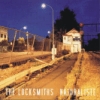 I have sometimes heard The Lucksmiths accused of being too saccharine and while the saccharine charge of the indictment might be indefensible, I would almost certainly take issue with the "too." I would argue that pop such as this would demand a little sweetness, and I submit that The Lucksmiths have found seemingly the perfect amount for their latest album.
I have sometimes heard The Lucksmiths accused of being too saccharine and while the saccharine charge of the indictment might be indefensible, I would almost certainly take issue with the "too." I would argue that pop such as this would demand a little sweetness, and I submit that The Lucksmiths have found seemingly the perfect amount for their latest album.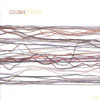 A taste for histrionics may be necessary when listening to the newest music from Alex Paulick and Rob Taylor. Every second of sound is rendered full of nuance and silky ease by way of gentle percussion, wavering melodies, and a deep bass resonance. On top of that is Taylor's voice. It is a voice that immediately reminds of me of lounge act vocalists and jazz crooners howling beneath a deep dark sky lit only by a cloud-veiled moon.
A taste for histrionics may be necessary when listening to the newest music from Alex Paulick and Rob Taylor. Every second of sound is rendered full of nuance and silky ease by way of gentle percussion, wavering melodies, and a deep bass resonance. On top of that is Taylor's voice. It is a voice that immediately reminds of me of lounge act vocalists and jazz crooners howling beneath a deep dark sky lit only by a cloud-veiled moon.
